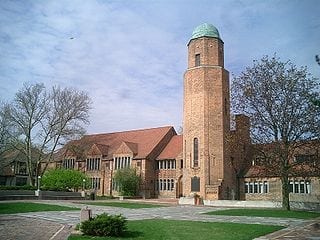Recently, I revisited a contemporary, classic book on education for a discussion group I participate in by John Taylor Gatto. This reminded me of 14 educational principles he compiled from personal research on the top, elite high schools in the US.
Gatto’s history spans a successful career teaching public school in New York for over 30 years, and in retirement advocating with a loud voice for educational reform as a writer and public speaker. His passion for teaching sparked a personal interest to discover what exactly, if anything was different about what is taught in the elite high schools. He learned that although each school carries its own academic mark of distinction, they all share a core that proves key to their students’ success.
Gatto summarizes the core into 14 areas, which he believes provides the foundation in determining what education for success really looks like. The programs in these elite schools genuinely equip students with skills, knowledge and tools to launch them way beyond academic success. These schools continue to produce a large portion of today’s leaders. This study lends a revealing yardstick of measurement to apply to institutions of learning as students resume school this fall.
The core list is as follows:
#1 Students form a complete theory of human nature, through theology, classic literature, philosophy, and history, and interestingly enough, not through psychology. Students reason through the universals and particulars of man with authors who pondered and wrote about the ultimate questions, inviting them to participate in the great conversation of human existence.
#2 All the schools provide consistent and frequent opportunity for student’s to practice in the active literacies- writing, and speaking. Writing and speaking well, reinforces thinking well and is essential in the great exchange of ideas for commerce, politics, religion etc. Think of Bacon’s quote, “reading maketh a full man, speaking a ready man, and writing makes him exact.”
#3 Students gain insight into major institutions, and the ideas that drive them by study of their form, history and hierarchy. US public schools do include US government as part of the required curriculum, but the foundation that the government was built upon is generally missed. How many students today read John Locke, and can explain that the US went the way of Locke, rather than Hobbes, two contemporary philosophers; whereas, Western Europe decidedly embraced Hobbes’s “Social Contract.” Other important institutions in the US that would benefit student understanding might include; universities, hospitals, libraries, the Pentagon, the New York Stock Exchange and so forth.
#4 Students behavior in all the schools is reinforced with a civil tone by repeated exercise in decorum and manners.
#5 Most of the academic work is independent, what I call active learning, as opposed to passive learning. Students do not wait around for the teacher to tell them what to do, read, answer etc., but are actively engaged in directing their education.
#6 Students participate in an energetic, physical sport that Gatto says in addition to the many obvious benefits, the important two are that it helps to confer grace upon the human form, and strengthen endurance. To carry oneself well, and with confidence benefits the person and those around them.
#7 Students apply a theory of access towards gaining access to any person or place. Gatto shares many enlightening, and successful stories of his students venturing around New York City, strategically executing their plans from his classroom.
#8 Personal responsibility in all areas is driven into the students at these schools. In fairness, the private schools are able to provide a little more opportunity here because most are boarding schools, so house tasks are shared. However, this ethic expands into taking leadership positions in clubs and such, and promoting the ideal of personal excellence in always delivering more than is asked.
#9 By the end of their 12th year, students are expected to have arrived at a personal code of behavior and morality that they’ve decided to navigate life by.
#10 All students emerge from their high school experience with comfort in the arts, both visual and performing, and architecture.
#11 Students acquire the power of accurate observation and recording that includes accurate notes as well as basic drawing. This skill was essential for the men who laid the foundation in modern science.
#12 The schools are able to meet each student with flexibility and skill because of an understanding of the individual. Each person brings with them weakness, so the schools are able to challenge a student in their weakness, so as to strengthen it.
#13 Another practice in the schools is student development and testing of their judgement, or what might be called correct thinking. We always hear about the importance of critical thinking, but a better term is correct thinking. Reasoning demands discrimination in the evaluation of things, then mental follow up on personal predictions and consistent mental correction.
#14 The last principle is an extension of the above. It is the developing a habit of caution in drawing conclusions instead of jumping to rash ones.
Now I’m not so naive as to not know, that it is often “who you know” that can make the big difference in certain life endeavors, but mastery in the above would certainly prepare an individual to know, who to know, how to go about knowing them, and where to find them. It’s also noteworthy, that many of the knowledge, skills, and understanding included in the core are relationship oriented. By the time these youths graduate high school, they understandably will be at ease with the world, and ready to lead wherever life takes them. The beauty of this type of education is that it’s not just for youth, or high school, but is an educational formula that anyone can follow at anytime in their life.



